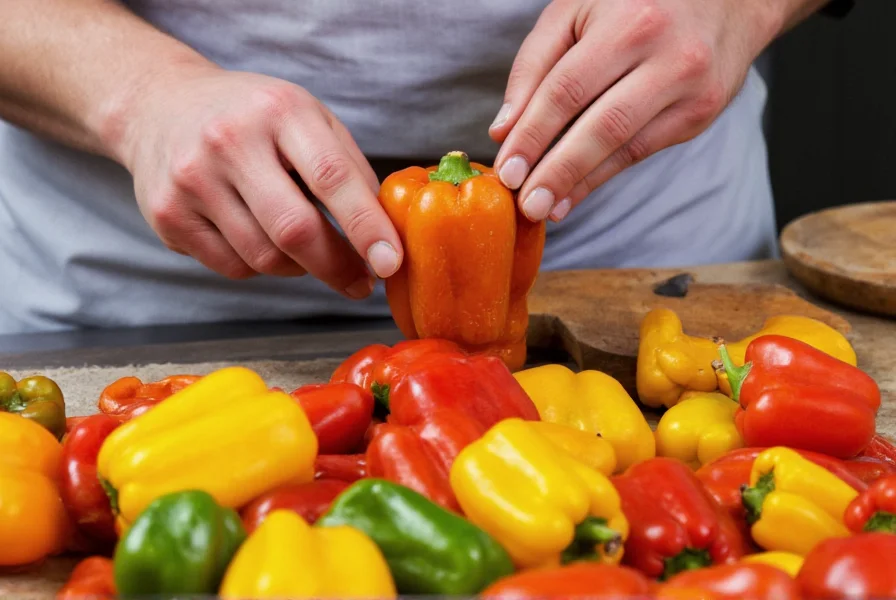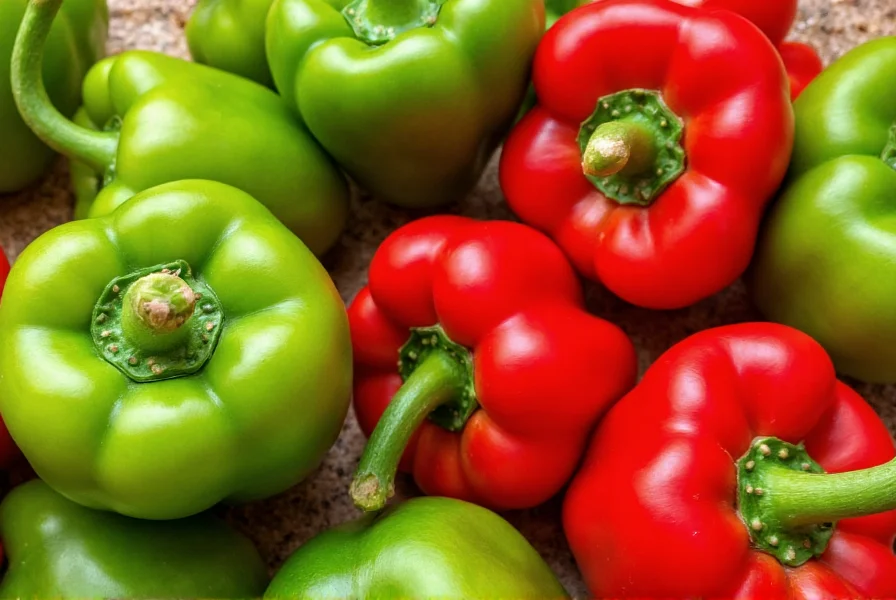Understanding the classification of peppers as vegetables requires examining both botanical science and culinary tradition. While botanists categorize peppers as fruits because they develop from the flower and contain seeds, chefs and home cooks worldwide treat them as vegetables based on flavor characteristics and culinary applications. This dual identity makes peppers a fascinating subject for food enthusiasts and gardeners alike.
Botanical Classification vs. Culinary Reality
The confusion around whether peppers qualify as vegetables stems from the difference between scientific and practical classifications. Botanically, all peppers—including bell peppers, jalapeños, and habaneros—are fruits because they form from the ovary of a flowering plant and contain seeds. However, in culinary practice, peppers are grouped with vegetables due to their low sugar content, savory taste, and common incorporation into salads, stir-fries, and other savory dishes.
This botanical-culinary disconnect isn't unique to peppers. Other produce items like tomatoes, cucumbers, and eggplants share this dual identity. The 1893 U.S. Supreme Court case Nix v. Hedden famously ruled that tomatoes should be classified as vegetables for tariff purposes, establishing that culinary usage often trumps botanical accuracy in everyday contexts.
Major Types of Pepper Vegetables
Pepper varieties span a remarkable spectrum from sweet to intensely hot. Understanding these categories helps home cooks and gardeners select appropriate types for their needs:
| Pepper Type | Scoville Heat Units | Common Culinary Uses |
|---|---|---|
| Bell Peppers | 0 SHU | Salads, stir-fries, stuffed peppers |
| Jalapeños | 2,500-8,000 SHU | Salsas, nachos, pickled peppers |
| Serranos | 10,000-23,000 SHU | Hot sauces, Mexican cuisine |
| Habaneros | 100,000-350,000 SHU | Extreme heat applications, Caribbean dishes |
The Scoville scale measures capsaicin concentration, the compound responsible for heat in chili peppers. Sweet bell peppers contain no capsaicin, while extremely hot varieties like ghost peppers can exceed 1,000,000 SHU.

Nutritional Profile of Pepper Vegetables
Peppers offer impressive nutritional benefits that vary by color and variety. Red bell peppers contain nearly 10 times more beta-carotene and double the vitamin C of green bell peppers, as they've had more time to ripen on the plant. All pepper varieties provide significant amounts of:
- Vitamin C (one medium red bell pepper provides 169% of daily value)
- Vitamin A (from beta-carotene in orange and red varieties)
- Vitamin B6
- Dietary fiber
- Antioxidants like lutein and zeaxanthin
Research published in the Journal of Agricultural and Food Chemistry indicates that the capsaicin in hot peppers may boost metabolism and reduce inflammation. The vibrant pigments in colored peppers also provide unique phytonutrients with potential health benefits.
Selecting and Storing Pepper Vegetables
When choosing peppers at the market, look for firm, glossy skins without wrinkles or soft spots. Heavier peppers typically contain more flesh and moisture. For optimal freshness:
- Store unwashed peppers in the crisper drawer of your refrigerator
- Place in a paper bag to absorb excess moisture
- Use within 1-2 weeks for best quality
- Freeze roasted peppers for longer storage (up to 6 months)
Contrary to popular belief, storing peppers at room temperature significantly reduces their shelf life. The cool, humid environment of a refrigerator crisper drawer best preserves their crisp texture and nutritional value.
Culinary Applications for Pepper Vegetables
The versatility of peppers makes them indispensable in global cuisines. Sweet bell peppers excel in raw applications like salads and crudités, while their roasted versions add depth to sauces and dips. Hot peppers require more careful handling:
- Wear gloves when handling extremely hot varieties
- Remove seeds and white membranes to reduce heat intensity
- Balance heat with dairy products like yogurt or cheese
- Use acid (lemon juice or vinegar) to brighten pepper flavors
For gardeners interested in growing pepper vegetables, these plants thrive in warm conditions with well-draining soil and consistent moisture. Most varieties require 60-90 days to reach maturity, with sweet peppers generally maturing faster than hot varieties.

Frequently Asked Questions
Why are peppers considered vegetables when they're technically fruits?
Peppers are botanically fruits because they develop from the flower and contain seeds. However, they're culinarily classified as vegetables due to their savory flavor profile, low sugar content, and predominant use in savory dishes rather than sweet preparations. This culinary classification follows historical usage patterns and practical cooking applications.
What's the difference between bell peppers and chili peppers?
Bell peppers are sweet varieties with zero Scoville heat units, featuring thick walls and a blocky shape. Chili peppers contain capsaicin, the compound that creates heat, measured on the Scoville scale. While bell peppers are harvested green or allowed to ripen to yellow, orange, or red, chili peppers come in numerous varieties ranging from mildly hot (like poblanos) to extremely hot (like ghost peppers).
Which color bell pepper is the most nutritious?
Red bell peppers are the most nutritionally dense, containing nearly 10 times more beta-carotene and double the vitamin C of green bell peppers. As peppers ripen from green to yellow to orange to red on the plant, their antioxidant content increases significantly. Red peppers also contain higher levels of lycopene, a powerful antioxidant associated with numerous health benefits.
How can I reduce the heat of spicy peppers when cooking?
To reduce pepper heat, remove the seeds and white membranes (placenta) where most capsaicin concentrates. Cooking peppers can mellow their heat slightly, while adding dairy products like yogurt or cheese creates a cooling effect through casein binding with capsaicin. Acidic ingredients like lime juice can also help balance heat perception. For extreme heat, consider using less pepper or substituting with a milder variety.
Can you eat pepper seeds and stems?
While pepper seeds and stems are technically edible, they're generally not recommended for consumption. Seeds can have a bitter taste and tough texture, while stems are fibrous and difficult to chew. In hot peppers, the seeds often carry concentrated capsaicin from contact with the placental tissue. For the best culinary experience, remove both seeds and stems before using peppers in recipes.











 浙公网安备
33010002000092号
浙公网安备
33010002000092号 浙B2-20120091-4
浙B2-20120091-4